The African Women’s Clinic: An Interview with Australia’s Only FGM/C Clinic
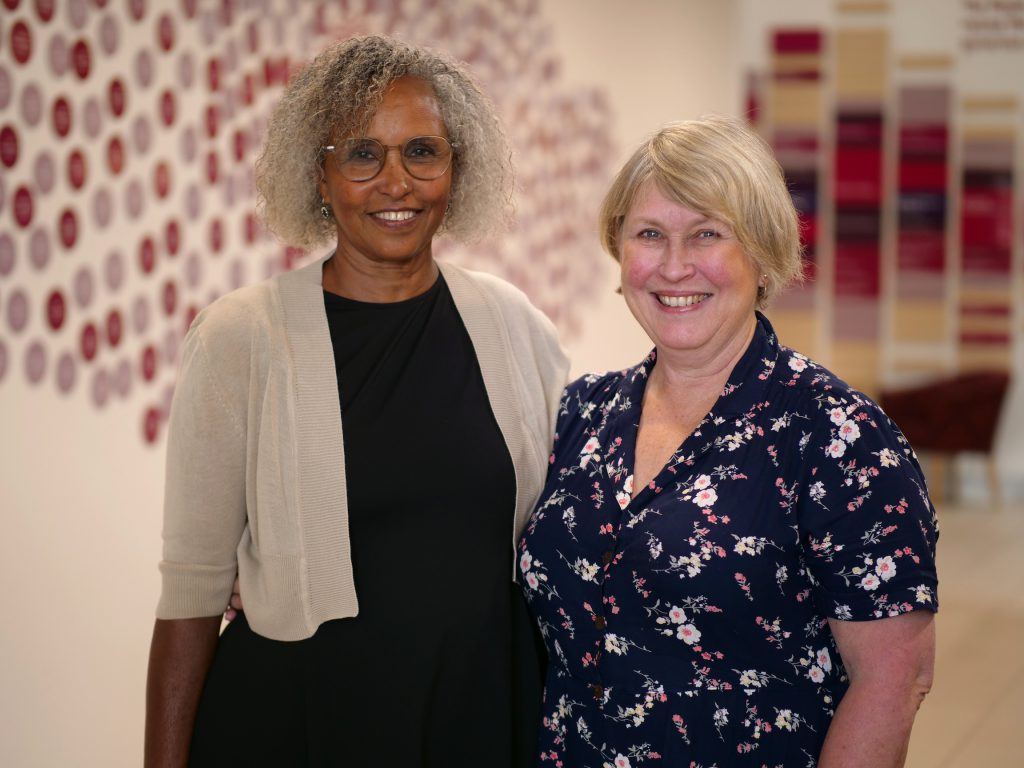
By: Kiah Leone While in Australia, I had the privilege of speaking with Marie Jones and Nigisti Mulholland from The African Women’s Clinic in Victoria, Australia to learn more about their clinic, the services they provide, and the current state of FGM/C-related care in the country. The African Women’s Clinic (AWC) is the only FGM/C-specific clinic in all of Australia. It’s staffed by women’s health nurses and midwives who provide confidential and comprehensive care to survivors living in the state of Victoria. For the last 14 years, the AWC has offered a safe space for survivors, while also providing FGM/C support and education resources. They have also made medical procedures such as de-infibulation more accessible to survivors. As a coordinator for the AWC, Marie works closely alongside Nigisti who is a coordinator for the Family and Reproductive Rights Education Program (FARREP)* at the Royal Women’s Hospital. FARREP is a program that provides services for women from places where FGM/C is practiced. Any survivor can self-refer to FARREP and once that contact has been established, a FARREP staff member can help the patient schedule their consultation, accompany them to their appointments, refer them to additional health services if necessary, and advocate for them if any issues arise. This close collaboration between FARREP workers and AWC clinicians has helped to foster an excellent environment to address the issue of FGM/C within a care setting. Clinic days are often filled with patient consultations, education and information sharing (involving books, diagrams, and mirrors), physical examinations, and deinfibulation procedures (when appropriate). Although clinic days may be busy, the advantage of a specialized clinic is that nurses and midwives at the AWC are able to spend as much time as needed with their patients. “This is the beauty of a FGM/C-specific clinic,” said Marie.“There is no 15-minute appointments. It might be 30 to 40 minutes or more.” Not only are staff able to spend more time with patients, but FARREP’s self-refer framework has helped to remove additional barriers to care such as long wait times. “It’s been wonderful for these women – they don’t have to wait long times to see a clinician, they can see us within two weeks or four weeks, ” explained Marie. “If they want de-infibulation on that day we do it on that day or if they want it two weeks later because they need some time to think about it, that’s not a problem, so the clinic has just made it so easy.” In addition to improving the availability of this type of care, staff at the AWC have also worked to improve the quality of care that survivors in Victoria receive by prioritizing survivors’ safety and comfort. According to Marie and Nigisti, this often starts by having multiple preliminary conversations to ease any patient concerns before they even arrive in the clinic. “I think that having this setup has helped them to build confidence in the early days,” said Nigisti. “Before they wouldn’t come for a review, but now they come in for a review and make an appointment to express their feelings and gratitude.” Once in the clinic, a staff member will usually take a patient history and identify the type of cutting the patient has undergone. They’ll also discuss any health issues they may be experiencing, whether they’re eligible for a de-infibulation procedure, and what steps would be involved if so. In addition to these services, education remains a cornerstone for staff at the AWC. “At the AWC, we do education not only in the survivors’ communities, but also for service providers to understand the cultural background and the need to be culturally aware and competent to look after these women,” explained Nigisti. This need for greater cultural awareness and competency amongst care providers is made clearer when patients share stories with Marie and Nigisti. Patients discuss all kinds of negative healthcare encounters they’ve experienced prior to finding the AWC. “We’ve had women with traditional cutting who try to find somewhere else to get help and the GPs [general practitioners] don’t know about FGM/C and you know the survivors go on for years before they actually find the clinic, but there’s lots of lots of stories like that,” Marie elaborates. “We would like to give a lot more education out to the community for all health professionals, so that we get the word out, because even after 14 years, there are still a lot of health professionals and GPs that don’t know that we exist, which is very unfortunate.” The stories shared here from Marie and Nigisti help to highlight the fact that FGM/C is a global issue that requires both local and international collaboration to address. As Australia’s first and only FGM/C clinic, the AWC has demonstrated a strong commitment to culturally safe and comprehensive care for survivors. In addition to offering a number of specialized services for patients, team members from both the AWC and the FARREP have emphasized the importance of expanding education efforts and a need for further resources in order to make that possible. To find out more about the African Women’s Clinic – or to learn how you can support the work that they do – please visit the African Women’s Clinic’s website. *Please note that since this discussion, Nigisti Mulholland has retired. Congratulations on your retirement, Nigisti! Thank you for your years of service supporting the health and well-being of FGM/C survivors.
Is legal action against female genital cutting enough to end the practice?
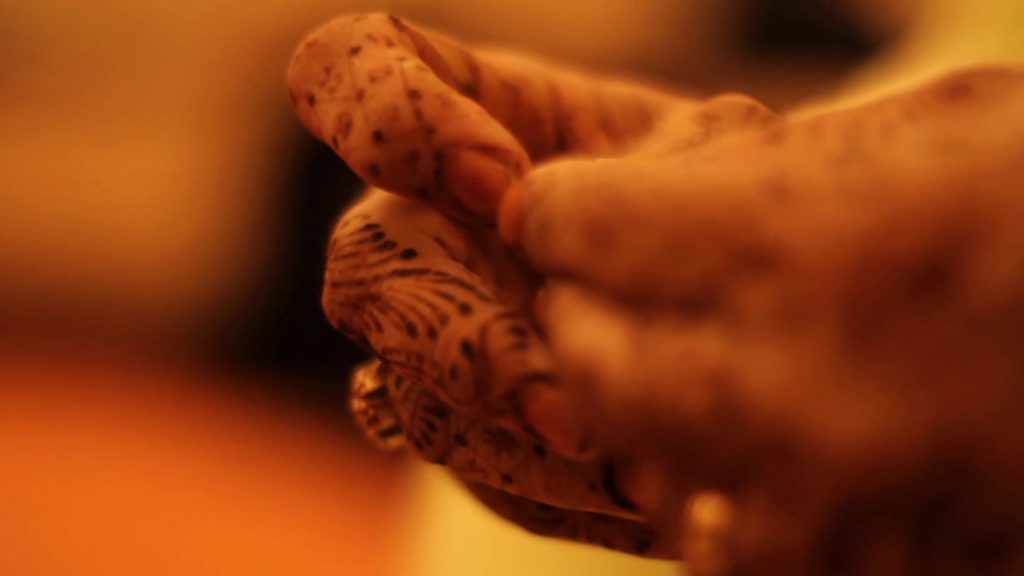
Understanding the impact of a Sahiyo co-founder’s documentary film, A Pinch of Skin, in India by Priya Goswami In September 2018, the Indian Supreme Court referred a Public Interest Litigation (PIL) on the prevalence of female genital cutting (FGC) in India to a five-judge constitution bench. My documentary film, A Pinch of Skin, was quoted as evidence by the Supreme Court of India to establish the prevalence of the practice. As the filmmaker, I was overjoyed with what my film had managed to do and become – the first audio visual evidence on the practice of FGC in India. There is no law in India against FGC. The PIL had been filed in 2017 by a Delhi-based lawyer seeking a ban on the practice of FGC in India. While other survivors of the practice joined in the petition against FGC, they were opposed by a counter-petition filed by a pro-FGC group within the Dawoodi Bohra community. That group claimed that FGC is not harmful and should be considered a part of their constitutional right to religious freedom. Accordingly, they demanded that the practice be scrutinized through this lens by a larger constitution bench of the court – an appeal that the court finally granted. With that said, a small part of me shrank hearing the news. I had intended the film to create debate around the subject and while legal reform may be one way of bringing about change, it will never be the mainstay for long term change. As an activist on the ground, I understand change requires sustained conversation. A law against the practice of FGC may become a mandate, but may also end up hindering the progress made by activists on creating a room for dialogue by years. “I had intended the film to create debate around the subject and while legal reform may be one way of bringing about change, it will never be the mainstay for long term change.” A broad evidence base for this is how some Dawoodi Bohra community members in the United States (U.S.) and Australia have hushed the practice, pushing it further underground, as the community members were charged in both countries with practicing FGC, or khatna as it is known in the Bohra community, and publicly spoke about it in the media. A federal judge dismissed all of the FGC-related charges in the U.S. case; whereas Australia’s High Court ruled all forms of FGC are illegal. While the cases against the community members in the U.S. and Australia have opened up the dialogue on the issue and more survivors have come forward, it has also instilled fear in the minds of some community members. This has, in turn, supported the movement toward medicalization of khatna, which is an equally dangerous trend. As an activist and a communication designer, I ask myself often – is pushing people to abandon the practice because the law says so ever a complete solution? Nine years ago, if you would have asked me what my goal with A Pinch of Skin was, I would have said to convince people to abandon the practice. Today, I say the same, except with the awareness that change requires time and persistent and effective communication, which involves the community from within. Key points to understand the situation in India: The conversation of female genital cutting in Asian communities is a relatively new one, as it is still largely believed to be an African problem. The subject was brought to public attention in India as an anonymous petition under the pseudonym ‘Tasleem’ was launched in 2011 or 2012. This was followed by media attention to A Pinch of Skin in 2013. In 2015, two collectives were formed to speak about the subject: Sahiyo and WeSpeakOut, both being the only organizations worldwide working on the subject of khatna prevalent in the Dawoodi Bohra community. In 2017, the two organizations, Sahiyo and WeSpeakOut, were invited by the National Commission of Women and Child Development to speak with Menaka Gandhi. The Indian government, after gathering first-hand evidence from survivors (also the co-founders of the two organizations), did a u-turn denying the evidence against the practice until this landmark judgment by the Supreme Court. Read this detailed report. The Dawoodi Bohra Women for Religious Freedom continue to discount efforts against FGC under the umbrella of religious freedom. Following the PIL, the Supreme Court of India ruled that FGC could be charged under The POCSO Act.
Khatna within the Bohra community: A Struggle of Tradition and Modernity
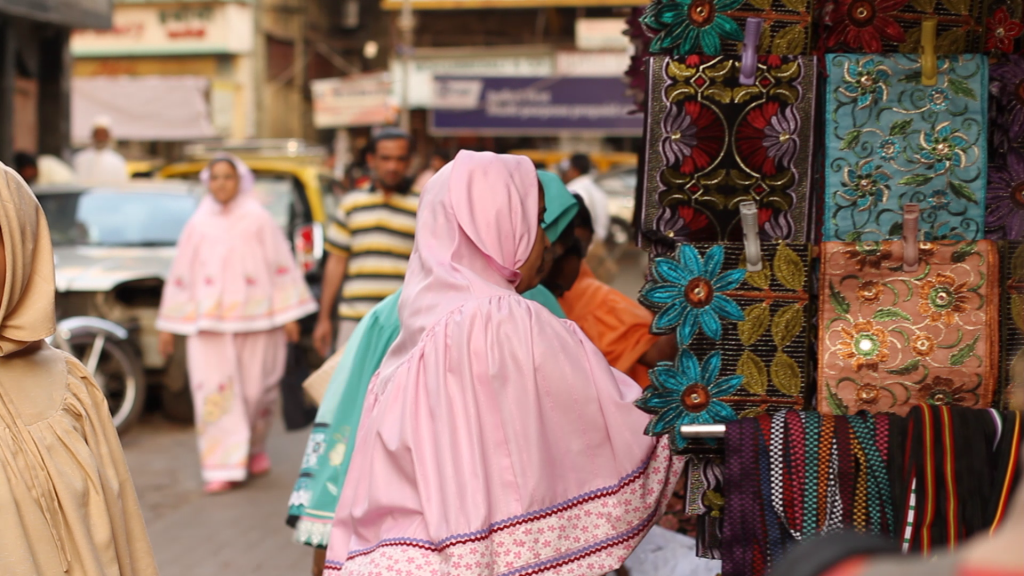
By Fatema Kakal (This is Part I in a series about female genital cutting within the Bohra community. Read Part II here) The Bohra Muslims, who have the reputation of being modern and progressive, secretly practice khatna, or female genital mutilation/cutting (FGM/C) within India, as well as in other parts of the world. I learned about this over dinner with my family when I was 17. A woman who went by the pseudonym of Tasleem had recently filed the first public petition asking the Syedna (High Priest/religious leader of the Bohra community) to stop practicing khatna. While it shocked me, it also left me intrigued, wondering why this community continues such a harmful practice. A few years later, as I was pursuing my postgraduate degree, I had the opportunity to answer the questions that my 17-year-old self had. For my Masters dissertation, I decided to use a new lens to understand the community better, and get a deeper insight into what could be the factors influencing the Bohras to continue khatna. As I worked on my research, I read about FGM/C – a lot. I also read about the Bohra community from an ethnographic lens. I reviewed literature, debates and discourses, narratives of survivors, and conducted interviews with activists working to end FGM/C (from Sahiyo and other organisations). I used French social theorist Michel Foucault’s concepts of sexuality, biopower and pastoral power to understand FGM/C. Religion and religious power can often be political, and can be woven through various forms, like the sensual, corporeal and the imaginary. Religious leaders are crucial here, who are defined by their status within religion. Thus, religious leaders have pastoral power where they lead, supervise and guide people. Pastoral power operates through the body, forming a locus for biopower, a form of control over people’s bodies. Religion uses sexuality as a mechanism for control, discipline and policing bodies. FGM/C then, is a practice used by religious leaders to control women and children’s bodies and sexuality. I used Tammary Esho’s framework of FGM/C as a socio-cultural-symbolic nexus. Esho has conduced extensive research on FGM/C and sexual and reproductive health and rights. It is a culturally mediated process of socialization, that transfuses gendered identity. Khatna is a cultural practice passed down through generations to socialize girls into the community. The pain felt during the cutting is considered a rite of passage and is symbolic of fertility and womanhood. It is meant to define a woman and her femininity, and her identity as a Bohra woman. To understand how these concepts actually applied to khatna and the Bohra community, I analysed narratives of survivors collected and shared by Sahiyo and We Speak Out in their reports, and Goswami’s documentary A Pinch of Skin, I found a few overarching themes within their stories. Khatna was seen as a religious and traditional practice, and was considered to be a tool to control women’s sexuality, and maintain morality. Most of the survivors’ experiences involved traditional cutting by a dai or a midwife, in unhygienic conditions; where mothers and other women in the family played a vital role. It was a highly secretive and taboo practice, but normalized and obligatory, and passed down through generations. Many women claimed to feel anger and shame, remembered it being painful, and asserted it affected their sexual lives, and crucially, being a traumatic event in their lives. I interviewed activists as key informants who highlighted that the silence around khatna was breaking – with Tasleem’s petition in 2012, and the arrests in the United States and Australia. Religious leaders also began addressing it through sermons and letters issued to community members. The public interest litigation in the Indian Supreme Court in 2017 and the growing anti-FGM/C movement rising from within the community were important for people to hear different voices around khatna. This in turn, led to a shift in the rationale for the practice. While it was earlier believed that it controls women’s sexuality, the Bohra clergy was increasingly scrutinized for controlling women’s bodies. The clergy changed the justification behind the practice, by claiming it is a religious practice and a marker of Bohra identity. The growing anti-khatna movement was also considered an attack by Westernization. Thus, continuing khatna became a statement defying Western notions of appropriate religious customs and traditions. The Bohra clergy encourages people to visit medical professionals to have their daughters cut safely, promoting medicalisation. Medical facilities are increasingly accessible for people in the Bohra community, especially in big cities, who claim to do the cutting in a safer, hygienic way, thus perceived to be potentially minimizing risk and trauma. The Bohra clergy is an important agent in the continuation of khatna. People’s lives are heavily influenced by the Syedna and the clergy due to their pastoral power over the community. They are deeply involved in people’s lives, and their pastoral power has political power. Khatna is a form of control over girls’ bodies and sexuality, which is considered aberrant. Thus, the clergy enforces biopower through khatna, to ensure women uphold values of fidelity and morality. People in the community however, look at khatna at a socio-cultural-symbolic nexus. Khatna is significant for forming a girl’s identity as a Bohra woman, and has cultural and symbolic significance as a rite of passage. Women are bearers of culture, and it is a tradition passed down through generations. Thus, khatna continues to be practiced in the Bohra community, due to social, cultural and religious norms of womanhood, purity and sexuality. The clergy has significant influence over the community and the family. Law can play a crucial role in discouraging people from continuing khatna. Thus, in order to end the practice, it is important to engage the various stakeholders in the community who protect the practice, especially women who are often primary decision-makers for children to undergo khatna.
The movement to end FGM/C: Looking back at the 2010s and looking forward in 2020
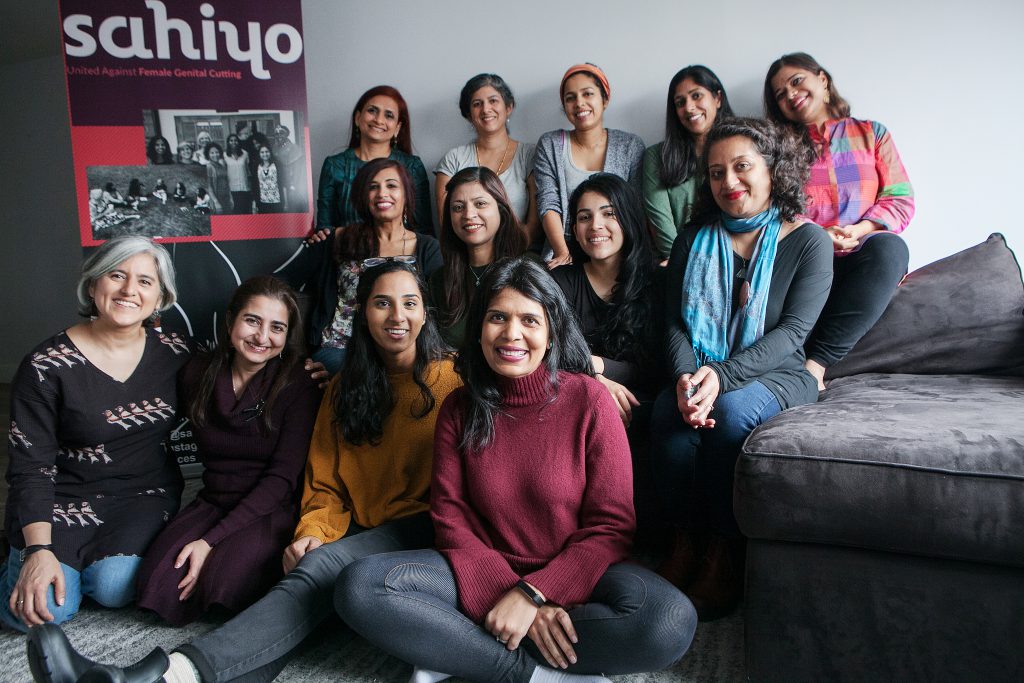
By Sahiyo 2020 is here, and we at Sahiyo are excited. 2020 brings with it not just a new year, but the dawn of a new decade of hope and hard work for our global movement to end female genital cutting (FGC). This is the decade in which we must give it our all, because we have pledged to achieve the United Nations Sustainable Development Goal of eliminating Female Genital Mutilation/Cutting by 2030. As we look forward to the 2020s, we cannot help but look back at the 2010s for inspiration. The last decade has been game-changing, not just for Sahiyo or the movement against FGC among the Dawoodi Bohras, but for the anti-FGC movement in Asia as a whole. At the start of 2010, FGC was still considered an “African” problem, and Asian countries were barely on the map of the places where FGC is prevalent. Today, we know that FGC is truly and disturbingly a global phenomenon putting 3.9 million girls at risk every year, as you can see in this map created by Orchid Project: Nearly half the countries on the map above are not yet included in the UN’s official list of 30 countries where 200 million women and girls have undergone FGC. In the 2020s, let us work to ensure that this information gap is bridged, so that Asian survivors of FGC are officially recognised. In fact, you can start now by signing Sahiyo’s petition asking the global community to invest in research on FGC prevalence and advocacy and support services to end FGC in Asian countries. But first, let’s take a look back at the biggest milestones of the 2010s from Sahiyo’s perspective. The birth of Sahiyo: In late 2011, ‘Tasleem’, an anonymous Dawoodi Bohra woman from India, started a Change.org petition asking the Syedna, the religious leader of the Dawoodi Bohra sect, to call for an end to FGC in the community. Although there had been scattered attempts to call out the secretive practice of FGC among the Bohras in the 1980s and ‘90s, they drew limited attention and the practice continued to be shrouded in silence. Tasleem’s petition, however, received nearly 3,500 signatures, triggered a spate of media reports on FGC in India, and inspired a few Bohra women, like Aarefa Johari and Farida Dariwala, to speak out publicly about their experiences of FGC. The media reports on FGC at the time also inspired Sahiyo co-founder Priya Goswami to make A Pinch of Skin, the first documentary film on FGC among Dawoodi Bohras in India. As Goswami’s film won the 2013 National Award for the best documentary in India, the taboo topic of FGC remained alive in the media, sparking private conversations between like-minded Bohra women all over the world who were keen to see an end to FGC. In late 2014, five of those women banded together to create a formal platform that would work to end FGC among Bohras and Asian communities at a transnational level. That platform — Sahiyo — was eventually founded in mid-2015. Breaking the silence, once and for all: In 2015, the private conversations on FGC among Bohras also burst into the public sphere with the launch of WeSpeakOut (known as Speak Out on FGM at the time). WeSpeakOut started as a private women’s WhatsApp group spearheaded by Masooma Ranalvi. In October 2015, the group launched a Change.org petition addressed to the Indian government, seeking a legal ban on FGC in India. Seventeen Bohra women publicly put their name to the petition, and the response was huge and immediate: media all over India began writing about FGC among Bohras, community leaders were forced to respond, and the silence about FGC among community members was broken for good. More than 200,000 people have signed the petition so far. From 2015 to 2019, we have watched the movement against FGC snowball into a global force that communities have not been able to ignore. There are now dozens of Bohra women fearlessly speaking out about their FGC experiences, signing up as Sahiyo volunteers, attending our events and pledging not to cut their daughters. Women and men have faced backlash from their families and communities for speaking out, but the movement has only grown stronger. Research and investigations: In February 2017, Sahiyo released the results of the first-ever research study on FGC among Bohras: an online, exploratory survey that found an 80% prevalence rate of FGC among Bohra women respondents. Among those who were cut, 98% women reported feeling pain when they underwent the ritual. Interestingly, 81% of respondents did not want FGC to continue in the community. In 2017, a Sahiyo investigation also revealed that FGC is being practiced by some communities in the South Indian state of Kerala, leading to furore in the region. Before this, it was believed that the Bohras are the only community in India practicing FGC. In 2018, WeSpeakOut published a seminal field study on FGC among Indian Bohras. The study found FGC prevalent among 75% of the daughters of the respondents. At least 33% of the respondents who were cut reported that FGC negatively impacted their sexual lives. More research on the FGC in Asian communities is the need of the hour, and we are aware of several studies that are currently underway in various parts of Asia. Continuous research can help us better understand not only the prevalence and impact of FGC on women and girls, but also the needs of survivors and trends towards abandonment of the practice. Developments on the legal front: The 2010s were a landmark decade for FGC on the legal front, particularly for the Dawoodi Bohra community. Australia: In 2015, three Bohras — a mother, a nurse and a community leader — were convicted for performing FGC on two minor girls in Australia. This was Australia’s first case under its 1997 law banning FGC. However, the legal ups and downs did not end with the conviction in 2015. In 2018, an appeals court overturned the convictions
Reflecting before we move forward: Overview of global FGC news from 2018

For everyone invested in laws and norms around the practices of FGC, 2018 was an incredibly eventful year. On January 22nd, Ellen Johnson Sirleaf, former Liberian president and first female head of state in Africa, on her last day in office, signed an executive order to ban FGC for a year. Over half of Liberian women have experienced FGC. In July, we were reminded again of how deadly FGC can be when a 10-year-old Somali girl died during a traditional genital cutting ceremony. After an investigation, those responsible were prosecuted. The direction of this case has been called a ‘defining moment’ for the country, as hopefully, it can set a precedent for future cases. August brought the overturning of an Australian case from 2015, in which a Dawoodi Bohra mother and a former nurse were found guilty of cutting the genitals of two sisters, aged six and seven. The overturning of the conviction was based on the grounds of there not being any clearly visible physical scarring of the sisters’ genital tissue, despite the fact that the girls had given testimonies about the emotional trauma they suffered at the time of the cutting. This acquittal was a major news story, as the case had been Australia’s first FGC prosecution. In September, the Indian Supreme court referred a Public Interest Litigation (PIL) on FGC to a five-judge constitution bench. The PIL had been filed in 2017 by a Delhi-based lawyer seeking a ban on the practice of FGC in India. While other survivors of the practice joined in the petition against FGC, they were opposed by a counter-petition filed by a pro-FGC group within the Dawoodi Bohra community, which claimed that FGC is not harmful and should be considered a part of their Constitutional right to religious freedom. Accordingly, they demanded that the practice be scrutinized through this lens by a larger constitution bench of the Court – an appeal that the Court finally granted. From September to November, as the Sri Lankan government considered a ban on FGC and gave a platform to survivors to privately share their experiences of harm and trauma, a number of Muslim Sri Lankan groups came together to defend their version of female “circumcision”. They claimed that circumcision is not the same as genital mutilation. Various leaders stated to parliament that they support the medicalization of the practice, but to prohibit the practice would be an infringement on their religious freedom rights. In November, a federal judge in Detroit declared a US federal law banning female genital mutilation unconstitutional. As a result, several charges against two doctors and others were dismissed in the first US criminal case of its kind. However, in December, federal prosecutors signaled that they would appeal the judge’s decision. The case has helped to bring more media attention to the issue of FGC both in the U.S. and more broadly and it’s lasting effects remain to be seen. Around the same time, the United Kingdom government pledged £50m to help end FGC across Africa by 2030. Their commitment has been the biggest investment made in history to address FGC and provide support to girls who are at-risk. This year the British Medical Journal published a study looking at the prevalence of FGC since 1990, globally. The trends discovered varied, with the practice continuing full strength in Iraq and Yemen but decreasing drastically in East African countries. In all, the last year was one full of pain and hope, but also moments of triumph. As 2019 just begins, we at Sahiyo hope the year brings forth more voices, more protection for women and girls and more progress in this area. We continue to believe that we can create a world where FGC is no longer practiced.
FGC Articles & Research in Other Countries
FGC in Asia: Female Genital Mutilation and Cutting in Asia Remain a Neglected Problem FGC in Asia and the Middle East Map Following our report, Facebook removes ‘Islamic Female Circumcision’ page promoting FGM Report on Female Genital Mutilation in Dagestan Sparks Controversy in Russia Factbox: The hidden cut: female genital mutilation in Asia UNESCAP: Harmful Traditional Practices in Three Countries of South Asia: culture, human rights and violence against women Courageous Alumna Speaks Out for Maldivian Women A Truly Global Effort is Needed to Eradicate FGM by 2030 Activist push for end to female genital mutilation Southeast Asia’s Hidden Female Genital Mutilation Challenge Asia Network to End Female Genital Mutilation/Cutting Consultation Report FGC in Australia: Women Speak Out on Female Genital Mutilation in Australia Genital mutilation convictions overturned after new evidence showing victims remain intact High Court to hear appeal on female genital mutilation and prosecutors’ push for retrial High Court upholds NSW genital mutilation convictions FGC in Canada: Canada lifts silence on FGM It’s Time for Canada To Play Its Part In Ending Female Genital Mutilation FGM, A Bitter Reality: Canada Needs To Do More Female Genital Mutilation in Canada and the Limits to Criminalization FGC in Colombia: Female genital mutilation in Colombia more common than assumed: UN ‘Cut with a blade’: Colombia indigenous groups discuss FGM FGC and COVID: Is the Pandemic Causing a Surge in Female Genital Mutilation FGC in Egypt: Egypt: The Law and FGM FGC and Islam: Islam and female circumcision Muslim doctors against female circumcision Debunking the Myth that Islam Requires Female Genital Circumcision Unmuting the Tabooed: FGM and Muslim Women’s Rights FGC in Indonesia: Increasing understanding of FGC in Indonesia: A field study by Islamic Relief Canada A Cutting Tradition Ending Female Genital Mutilation in Indonesia Ending FGM/C through Education and Community Engagement FGC in Iran: Ending FGM in Iran Needs International Support Female Genital Mutilation practiced in Iran, study reveals The Changing Paradigms of FGM/C Russian clinic in row over female genital cutting FGC in Iraq: Changing Perceptions to End a Harmful Tradition in Northern Iraq FGC in Malaysia: Review fatwa on female circumcision, Putrajaya urged DPM maintains that female circumcision is part of Malaysian culture Stop female circumcision, it has no medical benefit, says women’s groups Female Genital Cutting in Malaysia: A mixed-methods study Malyasia’s anti-FGM advocates: Leave our bodies alone Malaysian Public Attitudes and Perceptions towards Violence Against Women FGC in Oman: FGM Study in Oman Shows High Prevalence All Over The Country FGC in Pakistan: ‘Something has been taken away’: Pakistan’s well-kept FGM secret Lack of Data and Dialogue on Female Genital Mutilation in Pakistan Violated Hopes: My Struggle to Report on Female Genital Cutting in Pakistan I Asked Bohri Women About Their Practice Of Female Genital Cutting Or Female “Khatna” And Here’s What They Had To Say Why is it so difficult to talk about female genital cutting in Pakistan? Pak former minister to initiate drive against female khatna in India and Pakistan FGC in Philippines: Pag-Islam: An Exploratory Action Research on Female Genital Mutilation/Cutting Practices in the Bangsamoro Region, Philippines FGC in Russia: Female circumcision in Moscow clinic sparks ‘complete shock’ Russia Furore over FGM in mainly Muslim Dagestan Activists Call For Investigation Into Cases of Female Genital Mutilation, Saying It Would Be A First For Russia FGC in Saudi Arabia: New Study Showing Scale of FGM in Saudi Arabia Surprises Rights Activists FGC in Singapore: Local movement against female genital cutting turns to Ramadan bazaars to advocate its cause “A Tiny Cut”: Female Circumcision in South East Asia – An Overview of FGC in Malay community Female genital mutilation: The women fighting against Singapore’s hidden human rights violation Ultra-modern Singapore’s dark secret: female genital mutilation FGC in Sri Lanka: Sri Lank-Culture: Mothers Watch as Daughters are Circumcised Stop FGM Middle East: Sri Lank Harmful Traditional Practices in Three Countries of South Asia: culture, human rights, and violence against women Sri Lanka should Criminalise the practice of female genital cut, activist tells CESCR 61 Butter knife or sharp blade? Either way, FGM survivors in Sri Lanka want it to stop Female circumcision in Sri Lanka is ‘just a nick’, not mutilation: supporters Lawyers and activists urge Sri Lanka to ban genital cutting FGM/FGC Victims speak out FGM in Sri Lanka: It’s never ‘just a nick’ Sri Lankan Islamic Centre condemns ban on female circumcision as ‘affront’ Towards Understanding Female Genital Cutting in Sri Lanka FGC in the United Kingdom: UK Serious Crime Act 2015 Legislation – FGM Fact Sheet Female Genital Mutilation: Legislation, policy, and guidance Dawoodi Bohras in London Told to Stop Female Circumcision Calls For Compulsory School Teaching Of FGM UK Home Office Multi-agency statutory guidance on FGM The Female Genital Mutilation Survivors Teaches Victims How To Enjoy Sex Vagina surgery ‘sought by girls as young as nine’ Perception and barriers: reporting female genital mutilation
FGM before the Indian Supreme Court

By: Koen Van den Brande Age: 55Country: India It was to be expected… The Indian Supreme Court has been asked to look at the practice of ‘khatna’ – commonly known as FGM (Female Genital Mutilation) as a result of a Public Interest Litigation filed by Sunita Tiwari, a Delhi based advocate. There was a time, not so long ago, when the Suleimani community was known for people who showed great wisdom and leadership. For example when the educator, jurist and author Asaf Ali Asghar Fyzee advocated “the need to incorporate modern reforms in Islamic law without compromising on the ‘essential spirit of Islam’.” FGM has been in the news of late in India as well as the US, the UK and Australia, as a result of legal action taken against practitioners of ‘khatna’ and discussions on how to make existing legislation more effective. In the Mumbai-based Suleimani community, which I belong to, we have also been having some discussions on how to address this practice, which remains prevalent albeit more and more in what I would call an ‘intellectualised’ form. After all, we are not talking here about primitive tribal communities as in some countries in Africa, where in 10% of the cases, we can talk about ‘mutilation’ in the fullest, most horrific, sense. The community is well accustomed with the Islamic principle that the law of the land is to be respected. In the Prophet’s (PBUH) words ’Love of one’s country is a part of one’s faith” So at one level, the introduction of a new law would be the easiest way to address the issue… Or would it? In the UK such a law has been on the statute books for many years without ever leading to a single case in court and yet it is well-known that the practice continues there for thousands of girls. Or take the case of Egypt, where despite a law which declares the practice a crime, 98% of women continue to be cut. As an Egyptian government official comments in the highly informative as well as emotional documentary The Cutting Tradition, soberly narrated by Meryl Streep, you cannot put the entire population of a country in jail… A study in Senegal concluded that the introduction of specific legislation can be helpful, where it complements other efforts to educate and gain support for abandoning such a practice. However the study also observed that such legislation without the necessary work on the ground can build resistance if it is primarily seen as interference in a religious practice. In India there is no lack of existing legislation under which FGM would be seen as a criminal offence, as Maneka Gandhi, Minister for Women and Child Development recently spelled out in no uncertain terms, in response to a referral by the Supreme Court. In addition, supra-national bodies like the United Nations and the World Health Organisation take a clear stand on the subject. India is a signatory to the UN’s Universal Declaration of Human Rights, but it was not even on the radar of the UN until a group of women submitted a petition to recognise India as one of the countries where FGM is still practiced… In India there is the additional problem that the Muslim minority is always likely to find a new law addressing ‘khatna’, considered by some a ‘religious practice’, an imposition by a Hindu-dominated government – even if the law makes perfect sense. Such resentment could result in the practice being driven underground and once again reverting to the earlier back-alley horrors, which so many women have attested to. In fact, following the successful efforts of Sahiyo and others, a new site has recently been set up protesting ‘interference’, as expected. It would of course be much better if the two sides agreed to sit together to work out a sensible way forward. Sunita Tiwari is quite clear. She wants ‘khatna’ to be made an offence which is ‘cognizable, non-compoundable and non-bailable and offenders to get maximum punishment and penalty’. In reality, and for many Suleimani families today, ‘khatna’ has become what a father of two daughters called ‘a minor procedure’, when I asked him about it. That is to say that the ‘intellectualised’ form of the practice already insists on a medical procedure which simply removes a small bit of skin — the clitoral hood. Such a procedure may be justified and carried out legitimately to assist a grown-up woman. Which still leaves the question how one can justify making that decision for a child. As a result of my initial conversations and a bit of research, I wrote an article a while back in which I advocated a possible approach which would respect the view of those who consider this a spiritual matter and the rest of us. I believe this approach would also address the urgent need for reform and recognise that a large majority of the world has deemed this practice, for some time already, a crime against a girl child. What I proposed was that the community leaders could simply teach and mandate that a woman had to be of the age of consent to allow what should then be a largely symbolic ‘cut’ and that it should always be performed under medical supervision. At least one of the Bohra community’s spiritual leaders seems to have taken a similar view. He was reported in the media recently as saying ‘FGM should be by choice for adults’. Unfortunately this statement has become somewhat ‘politicised’ due to the succession struggle which is currently before the court in Mumbai. This proposed approach would also address another ‘law’. It could help resolve the current dilemma for any medical practitioner who would prefer not to break his or her Hippocratic oath. This oath – ‘do no harm’ – insists that a doctor can only perform a procedure on a patient which is actually in that patient’s interest. It must be difficult for any doctor to argue that ‘khatna’ is
Despite backlash, Sahiyo will continue to work with the community

The World Health Organization (WHO)’s guidelines on the management of health complications from female genital mutilation/cutting states that the “involvement of health-care providers in performing FGM is likely to confer a sense of legitimacy on the practice and could give the impression that the procedure is good for women’s health, or at least that it is harmless.” Unfortunately, this is exactly what is happening in India. It is difficult to rationalize how a medical professional who has taken a Hippocratic Oath to “…abstain from all intentional wrongdoing and harm, especially from abusing the bodies of man or woman, bond or free,” can promote khatna in India. In one part of the world doctors from our community are tried for violating the laws of their country (United States and Australia), and then we have doctors in India who are using the argument of religious freedom to advocate for a practice that is performed for non-medical reasons on a non-consenting minor girl. We have seen letters issued by various jamaats across the world, who use the hadeeth: حُبُّ الْوَطَنِ مِنَ الإِيمَانِ (Hubbul-Watan Min al-Eemaan), which translates to “Love of one’s homeland (country) is from faith”, to denounce the practice. Contrary to this, we have supporters of khatna, in India, who wish to continue with the archaic custom, despite the Indian government taking a stand and stating laws, the Indian Penal Code and the Protection of Children against Sexual Offences Act, against the practice. These are inconsistencies and we question them. Opposition to khatna is not at all unexpected. We had anticipated it, at some level, looked forward to being able to engage in a healthy exchange of views on a democratic platform. Unfortunately, in the last week, the premise of the opposition we have heard is based on half-truths. The fact that such strong opposition exists shows that our efforts to engage the community have led people to discuss the matter and question the practice. Sahiyo will continue to work with the community to bring an end to the practice in a proactive way. We add that that this practice is not only continued by Dawoodi Bohras. There are those from other South Asian communities who have spoken out against it too. Sahiyo focuses on engaging these communities, as well, but clearly, the largest group Sahiyo continues to engage is the Dawoodi Bohra community. We draw strength from knowing the high levels of education of women within the Dawoodi Bohras and are very hopeful that with a healthy dialogue we can re-evaluate this practice in the present day and come up with a solution that is in the best interests of all children and women. Last but not least, we would like to say that Sahiyo is saddened to be a target of deliberate slander, especially when the messages being passed around on WhatsApp and other social media platforms are blatantly untrue. To clarify a few doubts – Sahiyo has not started a petition addressed to the Syedna and we have not filed the PIL to ban khatna in India, either. We are only trying to engage with the community to break the silence around a practice we see as a violation of child rights and human rights. We are trying to ensure that the community is able to take an informed view on a rite of passage that can be, and sometimes is, harmful to children. We have always welcomed healthy discussion and now, more than ever, we think it is critical to be able to engage in a mature conversation on the subject. This is what we are trying to do through our advocacy campaign, Each One Reach One 2 that has been jointly launched with WeSpeakOut this Ramzan. The campaign will create means of effective communication to discuss the subject of khatna amongst various stakeholders. We hope that our brothers and sisters are able to use these and debate the issue to be able to understand the long-term and short-term pros and cons of this practice, rather than let emotion and religion alone influence their decision-making.
#NIMBY Reactions to Detroit
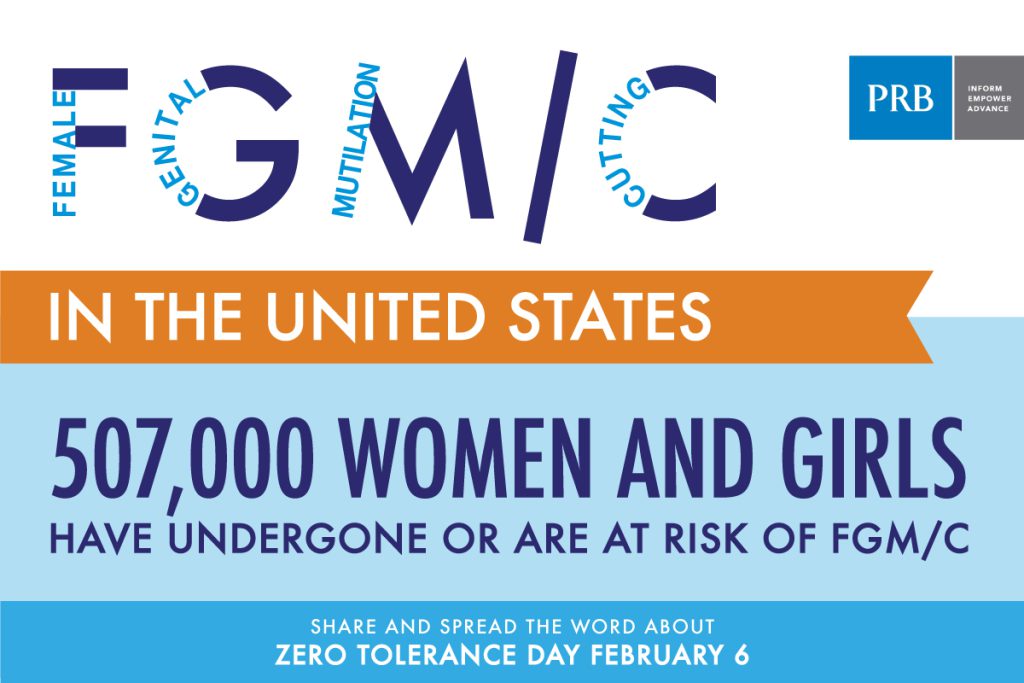
By: Anonymous Age: 32 Country: United States (Please note #NIMBY – Not In My Backyard) For over ten years, I have been famously or infamously known for speaking up about a taboo practice within the Dawoodi Bohra community in my social circles. I discovered I was a victim of female genital mutilation or cutting during college and was finally able to put into words what happened to me when I was seven years old. This time in my adult life was an extremely difficult one as I worked through the five stages of grief. A part of me was missing and gone forever. A part that I had not yet familiarized myself with or experienced while everyone around me was totally unaffected. As part of my healing process, I took to my social circles to tell my story, to raise awareness, to start a discourse. While I felt supported by some, I was met with apathy by most. I could never understand why others like me who had been victims of this practice didn’t feel the sense of loss that I did. They felt I was being “dramatic”, or that it was just part of our culture and it had not prevented them from living a normal and happy life. Others who agreed it was morally and ethically wrong, were hesitant to speak up about it or even show an alliance with me in my own grassroots efforts. Until recently, there were not many formal groups in the forefront actively working to end FGM/FGC. The increase in awareness about this issue over the last ten years is astounding. To think that the investigation of this activity had been taken up by the F.B.I. will likely be an eye-opener for those in the community who think of this as a cultural practice, not a criminal activity. When the story of the Detroit doctor being arrested for performing FGM/C first broke, I was not surprised at all. Yet I was met with several messages of shock and awe from friends and family (knowing my personal interest in this topic) asking if I had seen the news. Just last year, a similar story broke in Sydney, Australia — have we forgotten already? This prompted several jamaats or religious congregations across the world and the U.S., in particular, to send public resolutions to their members advising them not to carry out the practice in any form or else they would be subject to the laws of the land, and thus not be held liable for any individuals’ actions. What’s shocking to me is that the events in Sydney didn’t have a strong enough ripple effect for communities in the U.S. to comprehend the sincerity of governments to prosecute those performing this act. After a little bit of buzz, the onslaught of public resolutions, the contradictory statement made by the religious head of the community, everyone went back to being silent. What we’ve learned in the interim through much back and forth is that the head of the community does not condemn the practice and likely sees virtue in it. The public resolution sent by the powers that be was a liability waiver, not a condemnation of the act. Until then, devout followers wherever they are in the world will continue to follow his lead and subject their young daughters to what he deems a part of our history and “religious obligation.” The alarm over this investigation contrasts sharply with the apathy I was met with years ago. I was told: “Well, it didn’t happen to me” “Your [town] is different” “That doesn’t happen here” “You are exaggerating” “I know someone who had it done, and they’re fine” “I’ve had it done, and I’m fine” It shouldn’t have to take someone you personally know or are connected to, to go to jail for you to start paying attention. This is something that affects all of us no matter what part of the world we live in. Whatever your personal feelings are about this practice, it is time to start caring one way or another because yes, this is happening…even in your backyard.
What do Australian Bohras feel about Khatna today?

By: Anonymous Age: 32 Country: Australia Khatna is not a topic discussed very often amongst Bohras. Maybe because there is no reason to ever bring it up. However, since the case in Sydney, Australia, in which the aamil, Shabbir Mohammed Vaziri was sentenced to jail for being an accessory to Female Genital Mutilation, the topic has been brought up now and then amongst the ladies. Mostly, the conversation consists of a general curiosity as to what has happened in the Sydney jammat concerning the aamil saab and the midwife who was also found guilty in this case. I have realized that in the Melbourne jammat, people do not necessarily take the law as seriously as the people in the Sydney jammat do – mainly because the people in Melbourne have no idea about the severity of the case and its effects on the Sydney jammat. Even in Sydney, the entire ordeal was all very hushed up. People were reluctant to talk about it or even discuss anything regarding the case. So it makes sense and seems natural that people in other cities in Australia would not have much idea of what took place during the trial. As far as most non Sydney-siders are concerned, khatna is still a religious requirement that needs to be fulfilled. Most people in the Melbourne jammat have children who are still pretty young. They are not yet of age to have khatna performed. I do not know what parents will do when the time comes for them to decide if their daughters undergo it. I do not know whether they will abide by the legal laws of Australia or if they will still go ahead and have it carried out on their daughters. There is no way of knowing whether they will have this ‘cut’ carried out on them. You do not ask such questions in the jammat. The only positive outcome I can think of with regards to the case in Sydney is that it reflects the law of the land and shows that khatna should no longer take place within Australia. But if people still want to go ahead with it for their daughters, they will still travel elsewhere to have it done. Unfortunately, I feel that unless it comes from the Syedna himself that khatna should end, this practice may still be carried on by those who do not know to question it.
